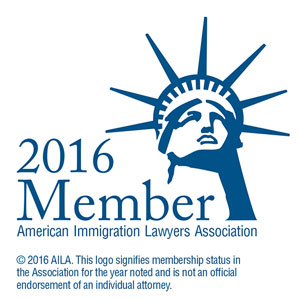Challenges to Expedited Removal Orders Against Returning Nonimmigrants: How Recent Case Law Supports Habeas Petitions Even After Removal
In 2011, I wrote an article on our firm’s website about how then-recent case law could provide an opportunity for some returning nonimmigrants to challenge, in federal court, the government’s efforts to subject them to expedited removal. At the time, it seemed as though such a challenge might require a habeas corpus petition to be filed in federal court while the returning nonimmigrant was still detained at the airport by Customs and Border Protection (CBP). A recent Second Circuit decision in a different context, however, suggests that this is not so. Rather, even returning nonimmigrants who are only able to contact a lawyer after they have already been removed from the United States may have recourse in federal court.
As I explained in my 2011 post, Congress has sought to make expedited removal orders, which can be issued by CBP officers at the airport and carry with them a five-year bar on returning to the United States without advance permission, essentially unreviewable in court for most people who are not U.S. citizens, Lawful Permanent Residents, or refugees or asylees. This creates a significant risk of arbitrary and potentially unreviewable enforcement of immigration law. Problems can arise, for example, when such enforcement is based on an arguably erroneous position taken by a CBP officer regarding the permissible scope of H-1B employment, as in the case of some expedited removal orders issued at Newark Airport that were discussed by Cyrus D. Mehta in January and February 2010. Absent judicial review, CBP officers and supervisors may have the last word on such questions, whether legally correct or not.
However, the Supreme Court’s 2008 decision in Boumediene v. Bush, 553 U.S. 723 (2008), made clear that under the Suspension Clause of the U.S. Constitution, Congress cannot (unless exercising its authority to suspend the writ of habeas corpus in cases of rebellion or invasion) simply prevent people detained by the United States, even alleged enemy combatants at Guantanamo Bay, from seeking judicial review of their detention through a petition for a writ of habeas corpus. Thus, even those subjected to expedited removal may be able to turn to habeas corpus to vindicate whatever other rights they have under statute or the Constitution. The Court of Appeals for the Ninth Circuit recently recognized in its March 2019 decision in Thuraisiggiam v. Department of Homeland Security, for example, that habeas is an available mechanism for asylum-seekers to assert their rights to proper proceedings to determine whether they have a credible fear of persecution. (The Court of Appeals for the Third Circuit has, in a decision I criticized in a prior blog post, limited the ability to use habeas as a vehicle to assert rights under immigration law in the context of recent entrants with no prior ties to the United States, but even the Third Circuit, in Osorio-Martinez v. Attorney General, recognized the habeas rights of those with somewhat greater ties to the United States, in that case juveniles with approved petitions for Special Immigrant Juvenile status.)
As I also explained in my 2011 post, previously admitted U.S. residents who are returning from a brief trip abroad would retain rights to due process of law under Landon v. Plasencia, 459 U.S. 21 (1982), and so could argue that they were entitled to greater procedural protection than expedited removal provides. Moreover, residents in this sense need not be restricted to Lawful Permanent Residents, that is, people with “green cards”. The Second Circuit, in its January 2011 decision in Galluzzo v. Holder, 633 F.3d 111 (2d Cir. 2011), recognized the due process rights of one who had been admitted as a visitor and overstayed the permitted period of admission, so returning resident nonimmigrants who did not overstay should be even more clearly entitled to due process rights. While it would be difficult for certain categories of nonimmigrants, such as B-1 or B-2 visitors, who need to maintain a foreign residence, to claim returning-resident due process rights without fatally undercutting their own case for readmission, there are many types of nonimmigrants such as H-1B, L-1, E-1, E-2, and O-1 who are not required to maintain a residence abroad which they lack intention to abandon. If returning to a U.S. residence from a brief trip abroad, such nonimmigrants would appear to have a strong argument that the abbreviated and potentially error-prone procedures of expedited removal did not afford them sufficient due process.
The problem, as a practical matter, was that the legally ideal time to file such a habeas petition seemed to be while one was detained at the airport, and that presents obvious practical difficulties. As I explained in 2011:
The ideal time to file a habeas petition under the theory outlined in this article would be while the petitioner was detained by CBP pending execution of the expedited removal order. Whether such a challenge might be possible following execution of an expedited removal order is a subject for further analysis, but it would at least be substantially more difficult. Classically, a constitutionally protected habeas petition would as a general matter require the petitioner to be in custody at the time the petition was filed, and a petitioner who has already been removed is not in custody, at least in the simplest and most straightforward sense of that term.
CBP often allows those subject to expedited removal proceedings to contact a friend while they are detained, but discourages or prevents them from contacting attorneys, presumably on the basis that an applicant for admission lacks the right to legal representation during initial inspection. (The chain of logic between the lack of right to representation and a prohibition on speaking to an attorney strikes this author as a bit strained, but that is an issue for another day.) Therefore, it may be wise for any nonimmigrant who anticipates potential difficulties upon arrival to ensure that the friend or friends whom they would likely attempt to call if detained is in possession of the contact information for an appropriate immigration attorney. If concerned that CBP might not allow any communication, or that a single attempt to call while detained by CBP might not reach anyone, a more cautious alternative would be to make a plan to check in with such a friend by phone immediately after one’s flight lands, before proceeding into the immigration inspection area and the perhaps broader area in which cellphone use is prohibited, and advise that an appropriate immigration attorney should be contacted if the arriving nonimmigrant is not heard from again within a preset amount of time.
Given how logistically complicated it would be, particularly for someone who had not expected problems, to arrange the filing of a habeas petition in the brief interval before being detained and put on a return flight, it is perhaps not surprising that no such habeas challenge to an expedited removal order by a returning resident nonimmigrant seems to have made it into court, at least so far as this author is aware. (There have been a few unsuccessful challenges by other types of nonimmigrants not able to claim returning-resident status.)
A recent decision of the Court of Appeals for the Second Circuit, however, has shed some light on what I referred to in 2011 as a subject for further analysis, namely, whether a habeas petition could be filed after an expedited removal order had already been executed. The issue arose indirectly in the recent appeal of Ravidath (Ravi) Ragbir, an immigrant-rights activist who brought a habeas petition to prevent his removal on the basis that ICE, in refusing to extend his previously-granted stay of removal, was retaliating against his Constitutionally protected speech critical of ICE activities. In its April 25, 2019 decision in Ragbir v. Homan, the Second Circuit allowed this claim to go forward pursuant to the Suspension Clause of the Constitution.
Because Ragbir’s First Amendment claim regarding the execution of an order of removal would otherwise have been statutorily barred under 8 U.S.C. 1252(g), the Second Circuit needed to address whether it was protected by the Suspension Clause, as in Boumediene. The government asserted that this was not so because, among other things, Ragbir was purportedly not in custody, having been released from detention after being granted judicial stays of removal. The Second Circuit disagreed:
If Ragbir were currently in the Government’s physical confinement or had already been deported, that Ragbir would be in custody is obvious.[29] But that he has not been deported is not for a lack of effort on the part of the Government, which detained Ragbir without notice in January 2018 and sent him to Florida, where he was detained for weeks in anticipation of deporting him. Much like in Hensley [v. Mun. Court, San Jose Milpitas Judicial Dist., 411 U.S. 345, 351 (1973)], that process was stopped only because Ragbir was released by a writ of habeas corpus issued by the district court in January 2018 (after which the Government told Ragbir to report again on February 10, 2018). Also like in Hensley, Ragbir must continue to report for ICE check-ins, and he remains in this country primarily due to judicial stays of removal, including the one entered by this Court. Moreover, the Government opposed a stay of removal in the district court pending this appeal, and at oral argument, the Government could not represent to this Court that—absent a stay entered by this Court and the stay previously entered in the District of New Jersey—ICE would not deport Ragbir pending resolution of this appeal.
Thus, that Ragbir faces imminent deportation, which necessarily involves a period of detention—and that he must comply, absent judicial intervention, with the Government’s orders “at any time and without a moment’s notice,” Hensley, 411 U.S. at 351—is not in question. That effects a present, substantial curtailment of Ragbir’s liberty. See id.
The Second Circuit expanded on the first sentence of the above in footnote 29 to its decision:
As to the custodial status of a deported individual, the Supreme Court “has repeatedly held” that the writ of habeas corpus is available to aliens excluded from the United States. Cunningham, 371 U.S. at 239-40 (citing Brownell v. Tom We Shung, 352 U.S. 180, 183 (1956); Shaughnessy v. United States ex rel. Mezei, 345 U.S. 206 (1953); United States ex rel. Knauff v. Shaughnessy, 338 U.S. 537 (1950); United States v. Jung Ah Lung, 124 U.S. 621, 626 (1888)). Although “in those cases each alien was free to go anywhere else in the world,” “[h]is movements . . . [we]re restrained by authority of the United States, and he may by habeas corpus test the validity of his exclusion.” Id. (quoting Shaughnessy v. United States ex rel. Mezei, 345 U.S. 206, 213 (1953)) (internal quotation marks omitted).
This discussion of the availability of habeas to a deported individual was a key portion of the Second Circuit’s reasoning, not merely dicta. It was necessary to show that Ragbir would have access to habeas at what one might call both ends of the process, if he were in physical custody prior to deportation or if he had been already deported, in order to conclude that as a logical matter he ought not lose such access to habeas simply because the process had been, by court order, suspended in the middle.
Under the Second Circuit’s decision in Ragbir, then, individuals subjected to expedited-removal orders may pursue habeas petitions even following their removal. Those returning nonimmigrants who arguably have due process rights, under Plasencia and Galluzzo, to a less summary process than expedited removal, should thus be able to vindicate those rights even if they are unable to contact an attorney until after they have already been removed. As a practical matter, it may make sense to first reach out to CBP in an effort to get the expedited removal order set aside administratively, but the availability of litigation even after removal is an important development. If CBP declines to administratively set aside an erroneous expedited removal order, that need not be the end of the story. Rather, a long-term United States resident nonimmigrant who was refused permission to return to his or her home can seek redress in court.




